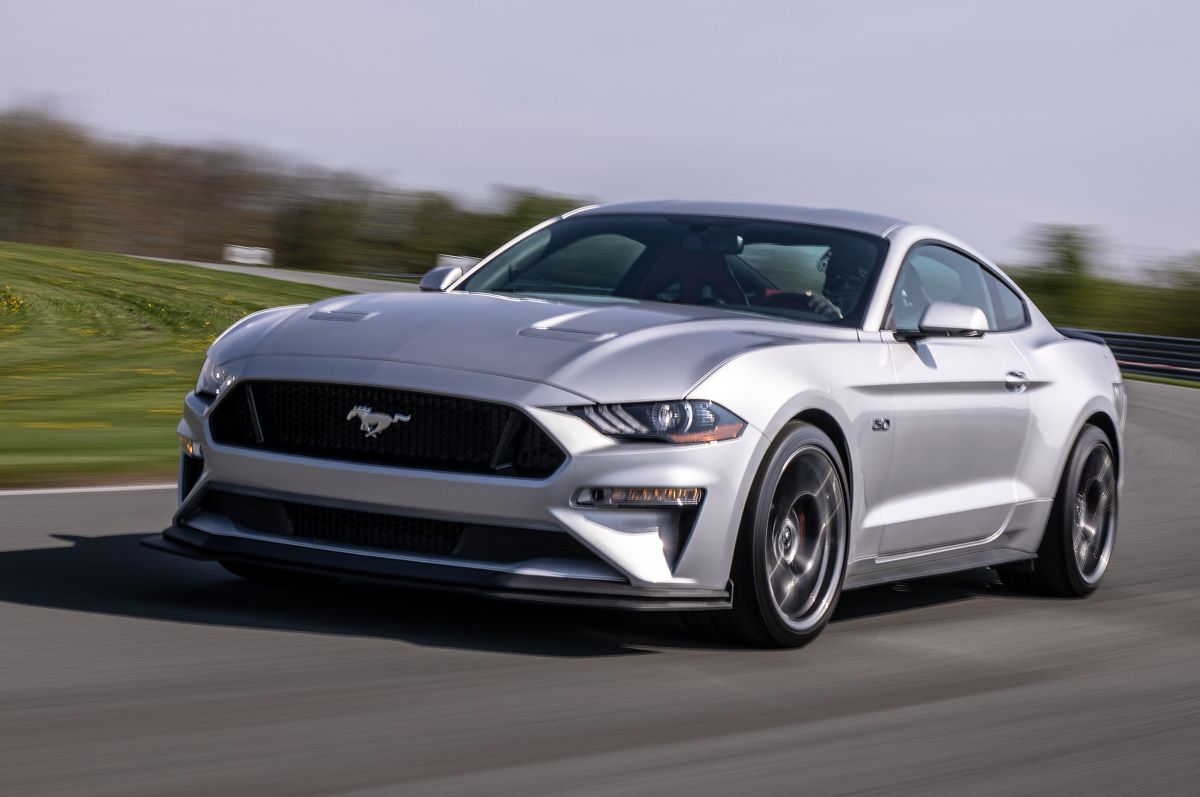When it comes to Ford vehicles, transmission reliability has been a tale of two extremes. While Ford has produced some of the most dependable automatic transmissions in the automotive industry, it’s also been responsible for some notorious failures that have left owners stranded and frustrated.
Understanding which Ford models feature bulletproof transmissions versus those prone to early failure can save you thousands of dollars and countless headaches down the road.
The world of Ford transmission reliability spans decades of engineering evolution, from the rock-solid units of the early 2000s to the problematic modern designs that have sparked class-action lawsuits.
An analysis of ARGO data reveals over 3,400 complaints referencing problems with Ford’s 10-speed transmission as of January 2023, covering all models using this gearbox. This stark contrast highlights the importance of choosing wisely when shopping for a used Ford.
In this comprehensive guide, we’ll examine five Ford models renowned for their transmission longevity alongside five that commonly experience transmission failures around the 60,000-mile mark.
We’ll delve deep into the specific transmission types, common failure modes, maintenance requirements, and real-world ownership experiences that separate the champions from the disappointments.
Whether you’re a potential buyer, current owner, or automotive enthusiast, this information will help you make informed decisions about Ford vehicles and their transmission reliability.
5 Fords That Rarely Blow Transmissions
These mechanically solid vehicles feature robust transmission designs, proven torque converter technology, and conservative engineering that delivers hundreds of thousands of miles of reliable shifting performance without premature failures or expensive rebuilds under normal driving conditions.
Their durable drivetrains incorporate heavy-duty internal components, adequate cooling systems, and time-tested valve body designs that resist wear and maintain proper hydraulic pressure while providing smooth operation across various driving scenarios.
The combination of proven transmission architecture, quality fluid specifications, and extensive real-world validation creates ownership experiences that eliminate drivetrain anxiety during extended vehicle life cycles.
From reliable pickup trucks with proven automatic transmissions to sedans with durable shifting systems, these vehicles demonstrate Ford’s engineering capability through patient development and thorough testing that prioritizes transmission longevity over cost reduction, delivering dependable drivetrain performance that maintains smooth operation throughout decades of ownership without requiring major repairs or component replacement.
1. 2005-2010 Ford Mustang GT (4R75E Transmission)
The mid-2000s Ford Mustang GT stands as a testament to transmission durability, primarily due to its robust 4R75E automatic transmission. The Ford 4R75E transmission, produced between 2004 and 2014, is a capable automatic transmission that was used in various Ford vehicles during that period, offering smooth shifting and reliable performance for a range of applications.
This four-speed automatic became the backbone of Ford’s performance lineup during this era, proving itself capable of handling substantial power while maintaining excellent longevity.
The 4R75E represents an evolutionary improvement over the earlier 4R70W, incorporating enhanced internal components and improved electronic controls.
What makes this transmission particularly reliable is its relatively simple design philosophy, four forward gears with proven hydraulic and mechanical systems that have been refined over decades.
The transmission features a robust torque converter, strengthened planetary gear sets, and an improved valve body design that eliminated many of the shift quality issues that plagued earlier Ford automatics.

Owners of 2005-2010 Mustang GTs frequently report trouble-free operation well beyond 150,000 miles with basic maintenance. The key to this longevity lies in the transmission’s conservative tuning and Ford’s decision to overengineer certain components to handle the V8’s torque output.
Regular fluid changes every 50,000 miles, using the correct Mercon V specification fluid, are typically all that’s required to maintain peak performance.
The 4R75E’s reputation for reliability extends beyond just the Mustang application. It was also used in various Crown Victoria, Grand Marquis, and Town Car applications, where fleet operators consistently achieved high mileage with minimal transmission-related issues.
The transmission’s ability to handle police pursuit duty and taxi service speaks volumes about its inherent durability. Even modified Mustangs producing significantly more power than stock often run these transmissions for years without major issues, though performance builds typically benefit from auxiliary coolers and upgraded internal components.
From a maintenance perspective, the 4R75E is refreshingly straightforward. The transmission pan is easily accessible, the filter is replaceable during routine service, and diagnostic procedures are well-established.
Warning signs of impending issues are typically gradual rather than catastrophic, giving owners time to address problems before complete failure occurs. This predictable failure pattern, combined with the transmission’s durability, makes the 2005-2010 Mustang GT an excellent choice for enthusiasts seeking reliable performance.
2. 2004-2008 Ford F-150 (4R75E Transmission)
The fourth-generation F-150, spanning the 2004-2008 model years, represents one of Ford’s most successful truck platforms, largely due to the proven reliability of its 4R75E transmission.
This period marked a sweet spot in Ford truck development, where the company had resolved most of the issues that plagued earlier transmissions while avoiding the complexity that would later cause problems in newer designs.
The 4R75E in the F-150 application was specifically calibrated for truck duty, with revised shift points, enhanced cooling capacity, and strengthened internal components to handle towing and hauling demands.
Ford engineers understood that truck owners would subject these transmissions to more severe duty cycles than passenger car applications, so they built in appropriate margins of safety.
The result was a transmission that could reliably handle the truck’s maximum towing capacity while delivering smooth, predictable shifts under normal driving conditions.
What sets this transmission apart from problematic modern units is its mechanical simplicity and proven design architecture. The 4R75E uses a conventional hydraulic control system with electronic oversight, rather than relying entirely on complex electronic controls that can fail.

This hybrid approach provides the benefits of electronic precision while maintaining the reliability of tried-and-true hydraulic systems. The transmission’s torque converter lockup strategy is particularly well-executed, providing fuel economy benefits without the harshness or durability issues seen in some competitors.
Fleet operators and commercial users have consistently praised the 2004-2008 F-150’s transmission durability. Many work trucks in this generation have exceeded 200,000 miles with only routine maintenance, including those subjected to daily towing and stop-and-go delivery routes.
The transmission’s ability to handle abuse while maintaining smooth operation has made these trucks highly sought after in the used commercial vehicle market.
Maintenance requirements for the 4R75E in F-150 applications are minimal but critical. Regular fluid and filter changes at 50,000-mile intervals, using proper Mercon V fluid, will typically ensure trouble-free operation for the vehicle’s lifetime.
The transmission benefits from an external cooler for heavy-duty applications, though the factory cooling system is adequate for most users. Early warning signs of wear are usually subtle – slight delays in engagement or minor shift quality degradation, giving owners plenty of time to address issues before major damage occurs.
3. 2011-2017 Ford Mustang GT (6R80 Transmission)
The 6R80 transmission found in the 2011-2017 Ford Mustang GT represents a significant leap forward in transmission technology while maintaining the reliability that made its predecessor famous.
It is based on the ZF 6HP26 transmission and has been built under license by the Ford Motor Company at its Livonia Transmission plant in Livonia, Michigan.
This six-speed automatic brought modern efficiency and performance to the Mustang platform without sacrificing the durability that enthusiasts demanded.
The 6R80’s design philosophy centers around proven German engineering principles, licensed from ZF and adapted for American performance applications.
The transmission features six forward speeds with carefully optimized gear ratios that provide excellent acceleration while maintaining highway fuel economy.
The unit’s electronic control system is sophisticated yet reliable, using multiple sensors and adaptive learning capabilities to optimize shift quality and timing for different driving styles and conditions.

What makes the 6R80 particularly impressive is its ability to handle significant power increases over stock. Many Mustang owners have successfully run supercharged and turbocharged combinations producing 600+ horsepower on stock 6R80 transmissions with appropriate supporting modifications.
The transmission’s robust planetary gear sets, strengthened case, and advanced torque converter design provide the foundation for this capability. However, the key to reliability lies in proper calibration and adequate cooling.
The 6R80’s reliability record in Mustang applications has been exceptional, with most failures attributable to abuse, modification without proper supporting infrastructure, or neglected maintenance rather than inherent design flaws.
The transmission’s adaptive learning capability improves shift quality over time as it learns the driver’s habits and adjusts accordingly. This intelligence extends to thermal management, where the transmission can modify its behavior to protect itself during high-stress situations.
Maintenance of the 6R80 requires attention to detail but isn’t overly complex. The transmission uses Mercon LV fluid, which has extended service intervals but must be the correct specification to avoid damage. Unlike some modern transmissions, the 6R80 has a serviceable filter and drain plug, making routine maintenance straightforward.
The transmission’s electronic systems provide excellent diagnostic capabilities, allowing technicians to identify potential issues before they become major problems. With proper care, these transmissions routinely exceed 150,000 miles in performance applications where lesser units would have failed long ago.
Also Read: 5 Hondas That Stay Cool in Summer vs 5 That Overheat in Traffic
4. 2006-2010 Ford Explorer (5R55S Transmission)
The 2006-2010 Ford Explorer featured the 5R55S transmission, a five-speed automatic that earned a reputation for reliability in one of America’s most popular SUVs.
This transmission represented the culmination of Ford’s experience with five-speed automatic design, incorporating lessons learned from earlier units while maintaining the simplicity that contributes to long-term durability.
The 5R55S was specifically designed for mid-size SUV applications, with calibrations optimized for the Explorer’s weight, aerodynamics, and typical usage patterns.
Ford engineers understood that Explorer owners would frequently use their vehicles for family hauling, light towing, and occasional off-road adventures, so they built the transmission to handle these varied demands reliably.
The unit features a robust torque converter, proven planetary gear sets, and a sophisticated valve body that provides smooth shifts across all operating conditions.

One of the 5R55S’s key strengths is its predictable behavior and gradual failure modes. Unlike some transmissions that fail catastrophically without warning, the 5R55S typically gives owners plenty of advance notice when service is needed.
Common warning signs include slightly delayed engagement when cold, minor shift quality degradation, or occasional slipping under heavy acceleration.
These symptoms usually develop gradually over thousands of miles, providing an opportunity for preventive maintenance before major damage occurs.
Maintenance requirements for the 5R55S are straightforward, with fluid and filter changes recommended every 60,000 miles under normal conditions or 30,000 miles for severe duty.
The transmission uses Mercon V fluid and features a conventional drain plug and removable pan for easy servicing. Regular maintenance, combined with attention to cooling system health, typically ensures trouble-free operation well beyond 150,000 miles.
5. 2009-2014 Ford F-150 (6R80 Transmission, Early Production)
The early production 6R80 transmission in the 2009-2014 Ford F-150 represents Ford at its engineering best, combining advanced six-speed technology with the proven reliability that truck owners demand. 6R80 transmission in the 2009-2020 F150 pickup, the 2009-2018 Ford Expedition and Lincoln Navigator, the Ford Ranger from 2011 to the present, the Ford Transit from 2015-2019, and the 2011-2017 Ford Mustang.
During these early years, Ford’s manufacturing processes and quality control were at their peak for this transmission design, resulting in units that consistently delivered exceptional longevity.
The 6R80’s design for truck applications required significant modifications from its passenger car origins. Ford engineers strengthened the case, upgraded internal components, and recalibrated the control system to handle the F-150’s maximum towing capacity and payload ratings.
The transmission features an advanced torque converter with multi-stage lockup capability, providing excellent fuel economy while maintaining the smoothness and durability that truck owners expect.
What distinguished the early 6R80s from later problematic Ford transmissions was the attention to detail in manufacturing and assembly. These transmissions were built during a period when Ford was heavily investing in quality control and process improvement, following the lessons learned from earlier transmission problems.

The result was a transmission that met or exceeded Ford’s durability targets while providing the performance and efficiency advantages of six-speed technology.
The 6R80’s electronic control system in these early F-150s was calibrated conservatively, prioritizing reliability over aggressive performance tuning. This approach paid dividends in real-world durability, with many owners reporting trouble-free operation well beyond 200,000 miles.
The transmission’s adaptive learning capability allowed it to optimize shift quality for individual driving styles while maintaining protective strategies that prevented damage from abuse or overheating.
Commercial and fleet users quickly recognized the 6R80’s capabilities, with many work trucks achieving impressive mileage totals with minimal transmission-related issues.
The transmission’s ability to handle daily towing loads, stop-and-go delivery routes, and other demanding applications made it a favorite among business owners who needed reliable transportation.
Even modified F-150s with performance upgrades typically ran these early 6R80s for years without problems, assuming proper supporting modifications were made.
The key to the early 6R80’s success lies in its maintenance requirements and robust design margins. Regular fluid changes using proper Mercon LV specification fluid, attention to cooling system health, and avoiding excessive modification without proper support typically ensures decades of reliable service.
The transmission’s diagnostic capabilities allow technicians to identify potential issues early, often allowing preventive repairs that extend service life significantly.
5 Fords That Slip at 60K
These problematic vehicles plague owners with premature transmission failures, slipping clutches, and expensive rebuild requirements that contradict Ford’s engineering reputation through inadequate transmission design and substandard components that deteriorate rapidly under normal driving conditions.
Their compromised drivetrains incorporate weak internal components, inadequate cooling capacity, and problematic valve body designs that generate endless shifting problems despite Ford’s positioning that suggests superior durability and capability over mainstream competitors.
The combination of cost-cutting measures, inadequate testing, and problematic transmission selection creates ownership disasters as buyers discover that Ford’s automotive heritage cannot prevent fundamental drivetrain failures that prioritize manufacturing costs over basic reliability.
From models with known transmission issues to vehicles with premature slipping patterns, these cars prove that Ford’s engineering consistency varies dramatically across model lines, transforming reliable transportation into expensive transmission replacement scenarios requiring major repairs that quickly exceed vehicle value and undermine confidence in Ford’s traditional quality standards.
1. 2017-2023 Ford F-150 (10R80 10-Speed Transmission)
The 10R80 10-speed automatic transmission found in 2017-2023 Ford F-150s represents one of Ford’s most problematic transmission designs in recent history.
Without a doubt, 10-speed transmission is the largest issue affecting some 2021-2024 Ford F-150 trucks. This transmission, co-developed with General Motors, has many owners frustrated over harsh shifting.
Despite being a joint development with General Motors that promised improved fuel economy and performance, the 10R80 has been plagued by numerous issues that frequently manifest around the 60,000-mile mark.
The problems with the 10R80 are multifaceted and complex. that at least five models equipped with 10-speed transmissions experience jerking, harsh shifting, lunging, clunking, hesitation, and sudden loss of power.
Examples of these are whiplash, harsh and erratic shifting, vehicle jerking, lunging, and hesitation between gears. These symptoms often begin as minor annoyances but progressively worsen, eventually leading to complete transmission failure or the need for major repairs.

The root cause of many 10R80 problems appears to be related to its complex electronic control system and the transmission’s attempt to manage ten forward gears efficiently.
The transmission’s software struggles with shift hunting, frequently searching between gears in an attempt to find the optimal ratio for current conditions.
This constant shifting places excessive wear on clutch packs and other internal components, leading to premature failure. Additionally, the transmission’s torque converter lockup strategy has proven problematic, with many units experiencing shuddering, slipping, and eventual failure of the lockup clutch.
From a maintenance perspective, the 10R80 is particularly challenging. The transmission requires specific Mercon ULV fluid, which is expensive and not widely available.
The complex electronic systems make diagnosis difficult, often requiring specialized Ford diagnostic equipment to identify problems. Even when issues are identified, repairs are often expensive due to the transmission’s complex internal design and the need for specialized tools and training.
2. 2012-2016 Ford Focus (DPS6 PowerShift Dual-Clutch)
The DPS6 PowerShift dual-clutch transmission in the 2012-2016 Ford Focus stands as one of the most problematic transmissions Ford has ever produced.
This automated dual-clutch system was intended to provide the fuel efficiency of a manual transmission with the convenience of an automatic, but instead delivered a nightmare of reliability issues that culminated in a massive class-action settlement and extensive warranty extensions.
The DPS6’s problems stem from its fundamental design approach, which attempts to use dry clutches in an application better suited to wet clutch technology.
The transmission uses two separate clutch assemblies, one for odd-numbered gears and another for even-numbered gears – allowing for seamless shifts by engaging one clutch while releasing the other. However, the dry clutch design proved inadequate for the heat generated in stop-and-go driving conditions typical of Focus usage.

Owners began reporting problems almost immediately after the transmission’s introduction, with symptoms including harsh engagement, shuddering during acceleration, and complete loss of power.
The transmission’s clutch actuator system, which controls clutch engagement through electric motors and complex mechanical linkages, proved particularly troublesome. These actuators frequently failed, resulting in erratic clutch operation, grinding noises, and eventual complete transmission failure.
Ford’s response to DPS6 problems has been extensive, including multiple warranty extensions, a class-action settlement exceeding $35 million, and eventually discontinuing the transmission entirely.
The company implemented numerous technical service bulletins and software updates, but these measures largely failed to address the fundamental design issues. Many owners have experienced multiple transmission replacements, with some vehicles requiring three or more new transmissions during their warranty period.
3. 2013-2019 Ford Escape (6F35 CVT and 6-Speed Automatic)
The 2013-2019 Ford Escape featured two problematic transmission options that have generated significant owner complaints and reliability concerns.
The continuously variable transmission (CVT) option, designated as the 6F35, along with the conventional 6-speed automatic, both demonstrated concerning failure patterns that typically emerge around the 60,000-mile mark.
The CVT system in the Escape was Ford’s attempt to maximize fuel efficiency in their compact SUV, but the implementation proved troublesome from the start.
The transmission uses a steel belt and variable-diameter pulleys to provide infinite gear ratios, theoretically optimizing engine RPM for any driving condition.
However, the system’s complexity and sensitivity to proper maintenance created numerous reliability issues that Ford struggled to resolve throughout the Escape’s production run.
Common CVT problems include belt slippage, which manifests as a dramatic increase in engine RPM without corresponding acceleration, often described by owners as feeling like the transmission is slipping or failing to engage.

The transmission’s control system frequently malfunctions, causing erratic behavior, loss of power, and complete transmission failure. Many owners report a characteristic whining noise that develops gradually and eventually becomes constant, indicating internal wear or damage to the belt and pulley system.
The Escape’s transmission problems are compounded by maintenance challenges. The CVT requires specific fluid that must be changed at precise intervals using exact procedures, but Ford’s initial maintenance recommendations proved inadequate. Many transmission failures have been attributed to improper maintenance or the use of incorrect fluids.
The conventional automatic also requires specific fluid and precise maintenance procedures, but diagnostic challenges often make it difficult to identify problems before major damage occurs.
4. 2018-2022 Ford EcoSport (6-Speed Automatic)
The Ford EcoSport, introduced to the North American market in 2018, came equipped with a 6-speed automatic transmission that quickly developed a reputation for reliability problems.
This transmission, designed for the compact SUV’s modest power requirements, has consistently demonstrated premature failure patterns that typically manifest around 60,000 miles of operation.
The EcoSport’s transmission problems appear to stem from a combination of design compromises and manufacturing quality issues. Ford positioned the EcoSport as an entry-level vehicle with aggressive pricing, which likely influenced engineering decisions regarding transmission durability and component quality.
The result is a transmission that struggles to meet the longevity expectations of American consumers, despite being adequate for some international markets with different driving patterns and maintenance practices.

Common failure modes in the EcoSport’s transmission include premature wear of clutch packs, which leads to slipping, harsh shifting, and eventual complete loss of forward gears.
The transmission’s valve body frequently develops problems that result in erratic shift points, delayed engagement, and diagnostic trouble codes.
Many owners report a gradual degradation in shift quality that progresses from minor annoyances to complete transmission failure over a relatively short period.
The EcoSport’s transmission problems are particularly concerning given the vehicle’s relatively short production run in North America and limited dealer network support.
Many owners have reported difficulty obtaining proper diagnosis and repair, with some dealerships lacking experience with the vehicle’s unique systems and requirements.
This support challenge, combined with the transmission’s inherent reliability issues, has made the EcoSport a vehicle to avoid for buyers seeking long-term dependability.
5. 2020-2023 Ford Explorer (10R60 10-Speed Transmission)
The sixth-generation Ford Explorer, launched in 2020 with the 10R60 10-speed automatic transmission, continues Ford’s troubling pattern of problematic modern transmissions.
Despite being a smaller variant of the 10R80 found in F-150s, the 10R60 has developed its own set of reliability issues that frequently manifest around the 60,000-mile mark, leaving Explorer owners facing expensive repairs and diminished vehicle value.
The 10R60’s problems mirror many of the issues found in its larger sibling, including harsh shifting, gear hunting, and premature component failure.
The transmission’s attempt to manage ten forward gears in a mid-size SUV application has proven challenging, with the control system frequently struggling to select appropriate gears for current driving conditions. This indecision results in constant shifting between gears, placing excessive wear on clutch packs and other internal components.

Specific failure modes in the 10R60 include premature torque converter failure, which manifests as shuddering during acceleration, lockup problems, and eventual complete loss of converter function.
The transmission’s valve body, which controls hydraulic pressure throughout the unit, frequently develops sticking valves or pressure regulation problems that result in harsh shifts, delayed engagement, and diagnostic trouble codes.
Additionally, many units have experienced complete failure of internal clutch assemblies, resulting in loss of specific gears or complete transmission failure.
The financial impact of 10R60 failures extends beyond simple repair costs, as many owners have experienced significant depreciation in vehicle value due to transmission reputation and reliability concerns.
The Explorer’s transmission problems have generated numerous consumer complaints, negative reviews, and decreased resale values, making the vehicle a poor choice for buyers seeking reliable transportation or strong resale value.
These issues are particularly concerning given the Explorer’s position as Ford’s flagship three-row SUV and its importance to the company’s SUV lineup.
Also Read: 5 Volkswagens That Rarely Rust vs 5 That Rot Like Tin

